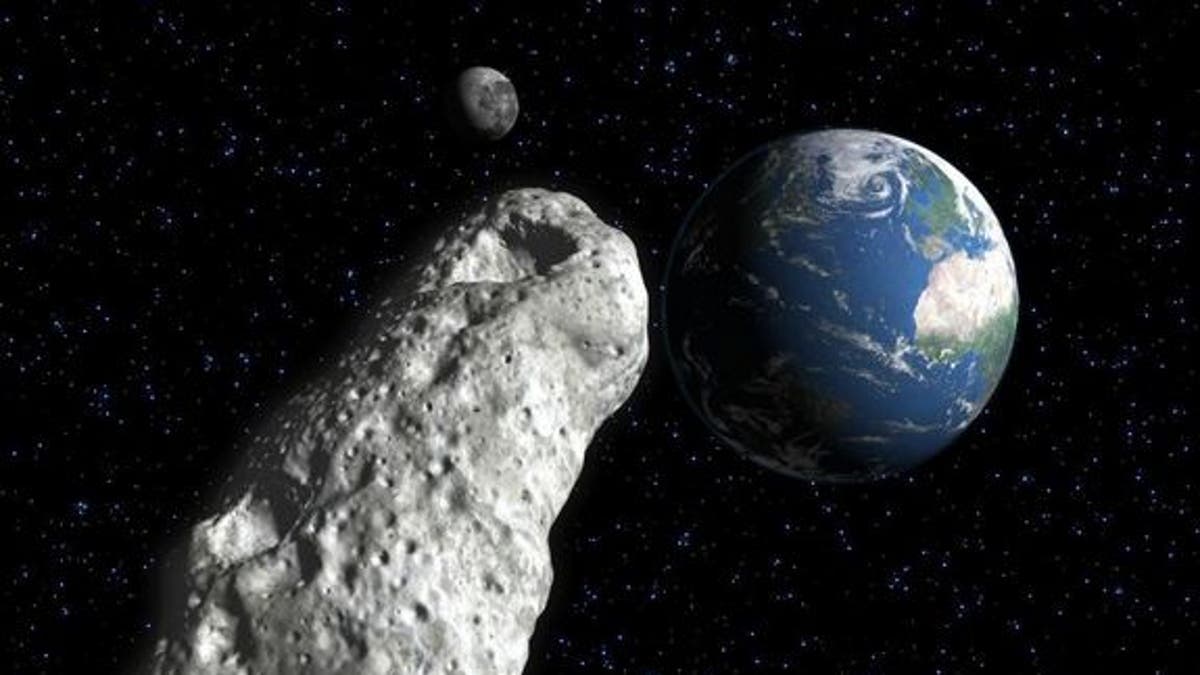
A football-sized asteroid – labeled 2018 GE3 – buzzed by Earth on April 16, 2018. (Texas A&M)
An asteroid is making a second run at Earth, this time whizzing past in the next few days.
NASA is projecting that the basketball-court-sized asteroid, 2013 TX68, should fly by from March 5 to March 8. It will be the second time the asteroid has come near Earth, passing two years ago at a comfortable distance of about 1.3 million miles.
"We already knew this asteroid, 2013 TX68, would safely fly past Earth in early March, but this additional data allow us to get a better handle on its orbital path," Paul Chodas, manager of NASA's Center for Near-Earth Object Studies (CNEOS), said in a statement. "The data indicate that this small asteroid will probably pass much farther away from Earth than previously thought."
Related: Asteroid-mining company 3D-prints object from space rock metals

This graphic depicts the orbit of asteroid 2013 TX68. The asteroid will fly by Earth on March 8. The asteroid poses no threat to Earth during this flyby or in the foreseeable future. (NASA/JPL-Caltech Image credit: NASA/JPL-Caltech)
CNEOS's latest prediction are that 2013 TX68 will fly by roughly 3 million miles from our planet. There is still a chance that it could pass closer, but certainly no closer than 15,000 miles above Earth's surface.
"There is no concern whatsoever regarding this asteroid - unless you were interested in seeing it with a telescope," said Chodas.
"Prospects for observing this asteroid, which were not very good to begin with, are now even worse because the asteroid is likely to be farther away, and therefore dimmer than previously believed."
Sean Marshall, a Cornell University grad student who works on observations of near-Earth asteroids, said the closest approach could be within Earth’s ‘ring’ of geostationary satellites or as far out as 40 times the distance to the Moon.
Related: Fireball meteor exploded over the Atlantic earlier this month
“Should this asteroid come closer than the geostationary satellites, it would be a rare occurrence -- that only happens about once per decade for large asteroids,” Marshall said in a statement. “What we know for sure is that it
will not collide with Earth this month, so do not panic.”
The asteroid was discovered by the NASA-funded Catalina Sky Survey on Oct. 6, 2013, as it approached Earth on the nighttime side. After three days of tracking, the asteroid passed into the daytime sky and could no longer be observed. Because it was not tracked for very long, scientists cannot predict its
precise orbit around the Sun.
The arrival of 2013 TX68 is just the latest space rock to mesmerize asteroid hunters.
There was a close encounter with another asteroid on Christmas Eve. In that case, asteroid 2003 SD220 passed about 6.6 million miles from Earth — or about 27 times farther than the moon is from Earth. The asteroid was not visible to the naked eye.
Less than a month later, NASA announced it was opening a special office to track asteroids.
The Planetary Defense Coordination Office formalizes the agency’s existing program for detecting and tracking near-Earth Objects. The office is located within NASA’s Planetary Science Division, which is in the agency's Science Mission Directorate in Washington.
Related: Meteorite hunters find 6 space rocks from Florida fireball
The space agency explained that more than 13,500 near-Earth objects have been discovered to date – more than 95 percent of them since NASA-funded surveys began in 1998. About 1,500 NEOs are now detected each year, according to NASA.
There were also several meteor sightings in February – including one in India that reportedly killed man, though that has been dismissed by NASA. A fireball exploded over the Atlantic Ocean also in February and six space rocks from a meteor were found in Florida.
